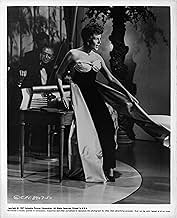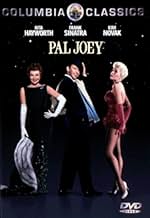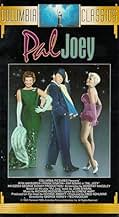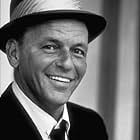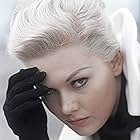Joey Evans is a charming, handsome, funny, talented 1st class, A-Number 1 heel. When Joey meets the former chorus girl and now rich widow Vera Simpson, the pair of lecherous souls seem made ... Read allJoey Evans is a charming, handsome, funny, talented 1st class, A-Number 1 heel. When Joey meets the former chorus girl and now rich widow Vera Simpson, the pair of lecherous souls seem made for each other.Joey Evans is a charming, handsome, funny, talented 1st class, A-Number 1 heel. When Joey meets the former chorus girl and now rich widow Vera Simpson, the pair of lecherous souls seem made for each other.
- Nominated for 4 Oscars
- 3 wins & 7 nominations total
Franklyn Farnum
- Guest at Charity Ball
- (scenes deleted)
Bess Flowers
- Guest at Charity Ball
- (scenes deleted)
Pierre Watkin
- Mr. Forsythe
- (scenes deleted)
John Alban
- Guest at Charity Ball
- (uncredited)
Leon Alton
- Printer Salesman
- (uncredited)
Isabel Analla
- Undetermined Secondary Role
- (uncredited)
Robert Anderson
- Policeman
- (uncredited)
Monya Andre
- Guest at Charity Ball
- (uncredited)
Maurice Argent
- Second Tailor
- (uncredited)
Al Bain
- Club Patron
- (uncredited)
- Director
- Writers
- All cast & crew
- Production, box office & more at IMDbPro
Storyline
Did you know
- TriviaThis is one of Frank Sinatra's few post-From Here to Eternity (1953) movies in which he did not receive top billing, which surprisingly went to Rita Hayworth. Sinatra was, by that time, a bigger star, and his title role was predominant. When asked about the billing, Sinatra replied, "Ladies first." He was also quoted as saying that, as it was a Columbia film, Hayworth should have top billing because, "For years, she WAS Columbia Pictures", and that with regard to being billed "between" Hayworth and Kim Novak, "That's a sandwich I don't mind being stuck in the middle of." As Columbia's biggest star, Hayworth had been top billed in every film since Cover Girl (1944), but her tenure was soon to end with They Came to Cordura (1959).
- GoofsIn the opening scene, Joey is escorted onto a train leaving town. Spengler's Fish Grotto is visible in the background, placing this in W Berkeley (though the police car reads "Gold City.") The train is headed north. Next, we see Joey exiting the train heading towards the "Ferry to SF" which would've been one of the Oakland stations, which is just a few minutes South of Berkeley.
- Quotes
Joey Evans: After all, two years is a long time between... drinks.
- ConnectionsEdited into The Green Fog (2017)
- SoundtracksThere's A Small Hotel
(uncredited)
Music by Richard Rodgers
Words by Lorenz Hart
Performed by Frank Sinatra
Featured review
If you read my title, that's probably all I should have to say about this one. But I'll flesh it out for you a bit. If you couldn't tell, this is one of my favorite musicals, and one of my favorite films, period. In my view, there's not a flaw to be had here--we'd have to invent one, and it would be implausible. I give plenty of 10s, but quite a few are like rating a one-scoop ice cream cone where they forgot the cone, but where there's an extra scoop of ice cream in an attractive dish to make up for it. Pal Joey is like a one-scoop ice cream cone where not only is the cone there, it's the kind of cone you love, and there are two extra scoops of ice cream that happen to be your favorite flavors.
Frank Sinatra is Joey Evans, a peripatetic musician who is also quite popular with women, but who has a reputation for not being exactly dependable or trustworthy. As the film opens he's being put on a train with a one-way ticket out of town because he was caught in an almost compromising situation with the Mayor's underaged daughter. He makes his way to San Francisco, where he sees that an old "friend"--more like an old debtee, Ned Galvin (Bobby Sherwood), is leading the band in a local club, The Barbary Coast. Joey finagles his way into a job, made more enticing to him, aside from the fact that he's broke, by the large number of very attractive women performers. But the club owner, Mike Miggins (Hank Henry), can see through his conniving ways.
Joey, who dreams of one day having his own club, begins falling for Linda English (Kim Novak), despite the fact that Ned is head over heels for her and out of all of the women, Linda is the one who wants the least to do with him. He also runs into Vera Simpson (Rita Hayworth) when he does a society gig with Ned. It seems that Vera used to be a showgirl like Linda, but she "married up". Pal Joey is largely about a love triangle between Joey, Linda and Vera.
This is an unusual romance in that for much of its length, all of the involved parties are reluctant. Linda may be attracted to Joey, but she knows better than getting involved with such a shifty womanizer. Vera is likewise cautious--especially since she has an implied history with Joey, and she now has a lot at stake. Joey is more than content to not approach commitment--he's satisfied with the string of women who continually pass through his life, who are all too happy to go out of their way to accommodate him--including doing his laundry and politely looking on and smiling when Joey puts the moves on another "mouse", as he calls them. As for Joey's interest in the two principals, it's not that he's not attracted to either, of course (what woman isn't he attracted to?), but with Vera he's playing her both for her money/social influence and to undermine what he sees as a feigned identity, and with Linda, he's initially attracted because she's playing hard to get. Both Linda and Vera also end up playing Joey to an extent to get back at him for various ethical blunders.
In addition to being intriguing for its uniqueness and relative complexity, all of this works as well as it does because the three leads are incredible performers and the script is intelligent, witty and tightly constructed. Sinatra, Novak and Hayworth are mesmerizing to watch on their own, but they all have great chemistry together, too. The characters seem tailor-made for these actors, despite the fact that the script was based on a popular Broadway show that began its run in 1940, and the Broadway show was itself based on short fiction pieces by John O'Hara that appeared in New Yorker Magazine.
Dorothy Kingsley's screenplay is loaded with subtle, quick humor in its clever dialogue. The combination of script, exemplary direction by George Sidney, and the great performances enables a number of very sophisticated dramatic moves, such as the deep backstory between Joey and Vera that is almost completely implied, and the overall atmosphere of the film, with its captivating and paradoxical combination of an ideal, romantic (in a more formal sense) world and a more earthy, cynical reality.
The atmosphere is also helped by the lush Technicolor cinematography, with some impressive shots of San Francisco, but equally attractive soundstage set-ups. It's interesting to note Kim Novak's look here, especially when she's framed against San Francisco cityscapes--it's remarkably prescient of her appearance in Hitchcock's Vertigo (1958). I suppose Pal Joey may have been why Hitchcock decided to cast Novak, and it may have influenced him a bit visually.
Before I run out of space, I should mention the music, by the incomparable duo of Richard Rodgers and Lorenz Hart, which is one of the best things about the film. Every song in Pal Joey is a gem. As a testament to how good they are, four of them--"I Could Write a Book", "The Lady is a Tramp", "My Funny Valentine", and my personal favorite, "Bewitched, Bothered and Bewildered" (the theme of the film)--have become jazz standards over the years. There have been hundreds of recordings by different artists performing them--for that matter there are hundreds of recordings of "My Funny Valentine" alone. The arrangements (partially by Nelson Riddle) and performances (especially by Sinatra, but that probably goes without saying) in the film are sublime. If you're a jazz lover, the film would be worth viewing for the music alone, but of course it offers much more than that.
Unless you simply hate musicals (in which case it's very unlikely that you've read this far), make sure you see Pal Joey at least once.
Frank Sinatra is Joey Evans, a peripatetic musician who is also quite popular with women, but who has a reputation for not being exactly dependable or trustworthy. As the film opens he's being put on a train with a one-way ticket out of town because he was caught in an almost compromising situation with the Mayor's underaged daughter. He makes his way to San Francisco, where he sees that an old "friend"--more like an old debtee, Ned Galvin (Bobby Sherwood), is leading the band in a local club, The Barbary Coast. Joey finagles his way into a job, made more enticing to him, aside from the fact that he's broke, by the large number of very attractive women performers. But the club owner, Mike Miggins (Hank Henry), can see through his conniving ways.
Joey, who dreams of one day having his own club, begins falling for Linda English (Kim Novak), despite the fact that Ned is head over heels for her and out of all of the women, Linda is the one who wants the least to do with him. He also runs into Vera Simpson (Rita Hayworth) when he does a society gig with Ned. It seems that Vera used to be a showgirl like Linda, but she "married up". Pal Joey is largely about a love triangle between Joey, Linda and Vera.
This is an unusual romance in that for much of its length, all of the involved parties are reluctant. Linda may be attracted to Joey, but she knows better than getting involved with such a shifty womanizer. Vera is likewise cautious--especially since she has an implied history with Joey, and she now has a lot at stake. Joey is more than content to not approach commitment--he's satisfied with the string of women who continually pass through his life, who are all too happy to go out of their way to accommodate him--including doing his laundry and politely looking on and smiling when Joey puts the moves on another "mouse", as he calls them. As for Joey's interest in the two principals, it's not that he's not attracted to either, of course (what woman isn't he attracted to?), but with Vera he's playing her both for her money/social influence and to undermine what he sees as a feigned identity, and with Linda, he's initially attracted because she's playing hard to get. Both Linda and Vera also end up playing Joey to an extent to get back at him for various ethical blunders.
In addition to being intriguing for its uniqueness and relative complexity, all of this works as well as it does because the three leads are incredible performers and the script is intelligent, witty and tightly constructed. Sinatra, Novak and Hayworth are mesmerizing to watch on their own, but they all have great chemistry together, too. The characters seem tailor-made for these actors, despite the fact that the script was based on a popular Broadway show that began its run in 1940, and the Broadway show was itself based on short fiction pieces by John O'Hara that appeared in New Yorker Magazine.
Dorothy Kingsley's screenplay is loaded with subtle, quick humor in its clever dialogue. The combination of script, exemplary direction by George Sidney, and the great performances enables a number of very sophisticated dramatic moves, such as the deep backstory between Joey and Vera that is almost completely implied, and the overall atmosphere of the film, with its captivating and paradoxical combination of an ideal, romantic (in a more formal sense) world and a more earthy, cynical reality.
The atmosphere is also helped by the lush Technicolor cinematography, with some impressive shots of San Francisco, but equally attractive soundstage set-ups. It's interesting to note Kim Novak's look here, especially when she's framed against San Francisco cityscapes--it's remarkably prescient of her appearance in Hitchcock's Vertigo (1958). I suppose Pal Joey may have been why Hitchcock decided to cast Novak, and it may have influenced him a bit visually.
Before I run out of space, I should mention the music, by the incomparable duo of Richard Rodgers and Lorenz Hart, which is one of the best things about the film. Every song in Pal Joey is a gem. As a testament to how good they are, four of them--"I Could Write a Book", "The Lady is a Tramp", "My Funny Valentine", and my personal favorite, "Bewitched, Bothered and Bewildered" (the theme of the film)--have become jazz standards over the years. There have been hundreds of recordings by different artists performing them--for that matter there are hundreds of recordings of "My Funny Valentine" alone. The arrangements (partially by Nelson Riddle) and performances (especially by Sinatra, but that probably goes without saying) in the film are sublime. If you're a jazz lover, the film would be worth viewing for the music alone, but of course it offers much more than that.
Unless you simply hate musicals (in which case it's very unlikely that you've read this far), make sure you see Pal Joey at least once.
- BrandtSponseller
- May 20, 2005
- Permalink
- How long is Pal Joey?Powered by Alexa
Details
- Release date
- Country of origin
- Language
- Also known as
- Prijatelj Joey
- Filming locations
- Production companies
- See more company credits at IMDbPro
Box office
- Gross worldwide
- $5,660
- Runtime1 hour 51 minutes
Contribute to this page
Suggest an edit or add missing content






